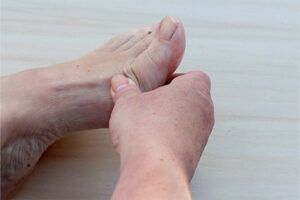Dermatology
Plaque Psoriasis
Real-World Results on Long-term Adherence to Plaque Psoriasis Treatment
The range of treatments that are available for moderate to severe plaque psoriasis has revolutionized the management of the disease. However, poor adherence and persistence to therapy can lead to suboptimal patient outcomes. Finding ways to improve adherence and persistence can help optimize treatment benefits for patients.
Overall, we know that adherence to topical therapy for the treatment of plaque psoriasis is poor. The more often we expect a patient to do something daily, the less they tend to adhere to it. Patients can struggle with adherence to topicals for many reasons, including difficulty of use, dissatisfaction with the cosmetic appearance, unpleasant feel, and the time commitment that is required. Topicals generally tend to be used by patients in a more episodic fashion to address visible localized symptoms. I do not personally subscribe to the concept of proactive topical use when active disease signs and symptoms are not present. In my experience, patients are already nonadherent to topical therapy when they have active disease, so their adherence is not likely to improve if you ask them to use the therapy when they are not having active signs and symptoms. These are all reasons I have shifted away from using topical therapy alone when I treat most of my patients with plaque psoriasis.
Based on real-world data, IL-12/23 and IL-23 inhibitors may be more forgiving of inconsistent adherence in terms of retention of efficacy. Their mechanisms of action induce what I consider to be a pseudo-remission, slowing the pathophysiology of disease for a period, which could help prevent a sudden rebound if adherence is less than ideal. Registry data have also suggested that adherence and long-term efficacy are better with IL-12/23 and IL-23 inhibitors than with IL-17 inhibitors and TNF blockers.
The future of psoriasis therapy is going to increasingly benefit from the development of improved oral therapies. We are continually seeing the US Food and Drug Administration (FDA) approval of new agents, and, in time, this will lead to the collection and evaluation of real-world data that will allow us to compare oral and biologic therapies that are administered by self-injection. This will help give us a clearer understanding of what patients prefer and what regimens they are willing to adhere to over time to attain and maintain plaque psoriasis clearance.
Available topical therapies for psoriasis are highly potent and can offer significant improvement relatively quickly. Some, like clobetasol, can do so in 2 to 4 weeks, compared with biologic therapies that would require 3 months or longer. However, as Dr Strober noted, we know that patients do not consistently use topicals. Some physicians might add a second or third topical to a patient’s regimen when their plaque psoriasis is not clearing, but if a patient is already nonadherent to the first topical, then making the treatment even more complicated should not be expected to add much benefit.
There is a term used in dermatology to describe a situation in which topicals work initially, but then stop working: tachyphylaxis. For a long time, we thought that growing resistance to the treatment explained why the efficacy of topical steroids decreased the longer a patient was on treatment. The “the more you use it, the less it works” explanation was likely backward. We now realize that the longer a patient is on a treatment such as topical steroids, the less likely they are to continue using it well. The less a patient uses their steroids as directed, the less well they will work.
The advent of systemic medications that are available for use in patients with less than severe disease has been an important advancement in the treatment of inflammatory skin diseases such as plaque psoriasis. Adherence is better with systemic options than with topicals, and I find this to be the case whether the systemic treatment is delivered orally or by self-injection. When I first discuss self-injection with a patient, they might be resistant to the idea of giving themselves a shot. But if I put it into perspective by first anchoring them on the idea of daily treatment and then telling them that the injection may only be needed once per month (or even less frequently), they are often very receptive to the injection. A patient’s subjective impression of a treatment option can be greatly influenced by how we present it in our discussions with them.
I agree with all the points that my colleagues have mentioned, and I especially believe that the way in which we discuss various treatment options with patients is very important. It is our role to provide needed perspective for patients. I often remind my patients of the old adage, “You don’t bring a knife to a gunfight.” In essence, that is what topicals are when it comes to the treatment of plaque psoriasis. They are effective locally, but they do not address the systemic problem.
It can be very useful to prescribe topicals in a reactive way if a patient has a breakthrough of active disease. Yes, the systemic agents that we now have available are very effective at keeping patients clear, but external stimuli such as stress or infection can cause small psoriasis flares. In these cases, a topical therapy can help for that short period of time, and patients will often be adherent for that time because they are motivated to clear the breakthrough symptoms.
My experience regarding self-injections has been similar to what Dr Feldman shared. Self-injection has been a barrier to adherence in other disease states, but, in my experience, it has been generally well accepted in the treatment of psoriasis. This may be because these therapies are well established and trusted, and patients in the psoriasis community typically already have an understanding that using them is an effective way to treat their condition. I find this acceptance to be especially true for younger patients, who may not want a daily reminder that they have a medical condition at a young age. And, of course, for patients who are truly not open to self-injection, we have effective oral options.
Czarnowicki T, Linkner RV, Suárez-Fariñas M, Ingber A, Lebwohl M. An investigator-initiated, double-blind, vehicle-controlled pilot study: assessment for tachyphylaxis to topically occluded halobetasol 0.05% ointment in the treatment of psoriasis. J Am Acad Dermatol. 2014;71(5):954-959.e1. doi:10.1016/j.jaad.2014.05.040
Huang Y-H, Tang C-H, Goh CH, et al. Persistence and adherence to biologics in patients with psoriasis in Taiwan: a new biologics user cohort study. Front Pharmacol. 2022;13:880985. doi:10.3389/fphar.2022.880985
Kircik LH, Stein Gold LF, Pariser DM. Improving adherence to topical therapies through improved clinician-patient communication and shared decision making. Cutis. 2019;103(4S):S13-S15.
Li Y, Lu J-J, Zhong X-Y, et al. Drug survival outcomes associated with the real-world use of ixekizumab, secukinumab, guselkumab, and adalimumab for the treatment of plaque psoriasis in China: a 52-week single-center retrospective study. Clin Cosmet Investig Dermatol. 2022;15:2245-2252. doi:10.2147/CCID.S387759
Teixeira A, Teixeira M, Almeida V, et al. Does the vehicle matter? Real-world evidence on adherence to topical treatment in psoriasis. Pharmaceutics. 2021;13(10):1539. doi:10.3390/pharmaceutics13101539
Torres T, Puig L, Vender R, et al. Drug survival of interleukin (IL)‑17 and IL‑23 inhibitors for the treatment of psoriasis: a retrospective multi‑country, multicentric cohort study. Am J Clin Dermatol. 2022;23(6):891-904. doi:10.1007/s40257-022-00722-y
Xu C, Teeple A, Wu B, Fitzgerald T, Feldman SR. Drug adherence and persistence of patients with moderate to severe psoriasis treated with biologic medications in a US commercially insured population. Dermatology. 2022;238(3):438-447. doi:10.1159/000519176













